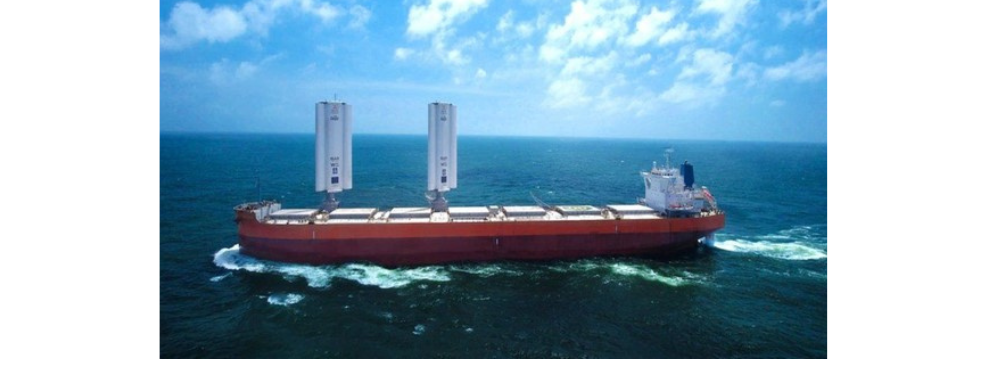The maiden voyage of the Pyxis Ocean is underway with a route from China to Brazil. It’s the first test of WindWings sails that are designed to cut fuel consumption and lower shipping’s carbon footprint. The expectation is that wind power vs. engine use would reduce lifetime emissions by approximately 30%.
While the wings fold down in port, they deploy in open water. One hundred twenty-three ft. tall, they’re constructed from the same durable material as wind turbines.
The Pyxis Ocean, developed by BAR Technologies in the UK, will take an estimated six weeks to reach its destination.
BAR’s head, John Cooper, thinks this voyage will be a turning point for the maritime industry and predicts that by 2025, half the new-build ships will be ordered with wind propulsion. The savings amounts to one-and-a-half tons of fuel per day. Four wings on a vessel means six tons of fuel saved; that’s 20 tons of CO2 per day.
The wings themselves are manufactured in China. Cooper indicated that a lack of government support in reducing the cost of imported steel prevents the company from making them in the UK.
The number of ships using this technology doubled over the past 12 months. In the international shipping fleet and new-build order book of over 110,000 vessels, there are under 100 having wind-assisted technology today. Even if that number dramatically increases, wind technology may not be suitable for all vessels, for example, where the sails interfere with the unloading of containers.
According to Cooper, “The invention of big combustion engines destroyed the trade routes and the sailing routes and now we’re going to try to reverse that trend, just a bit.”

